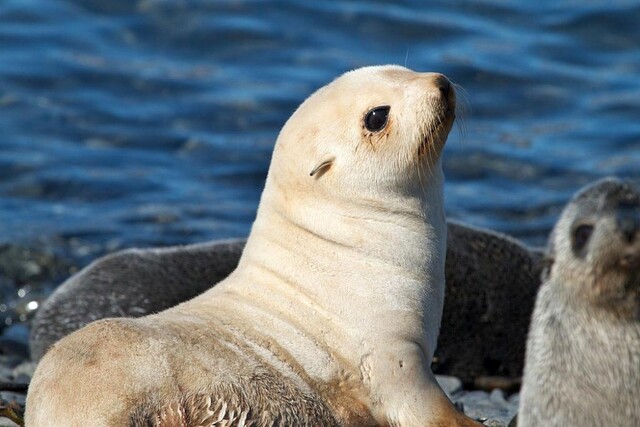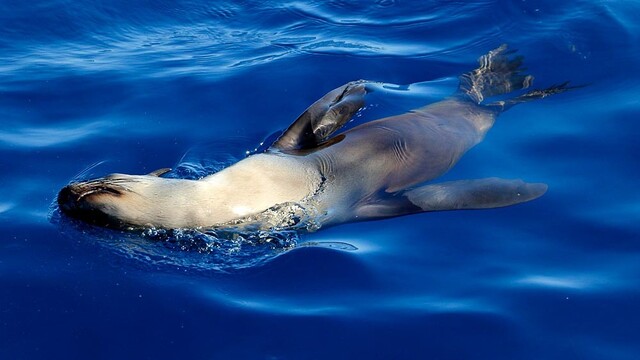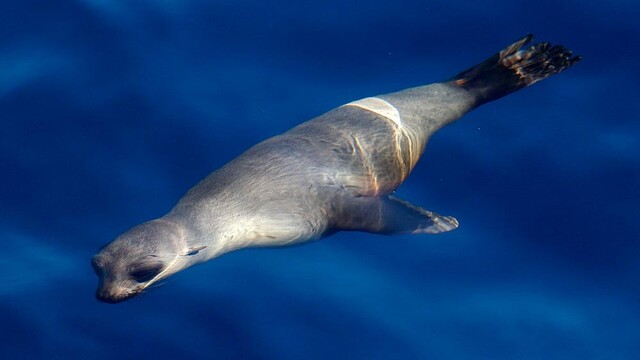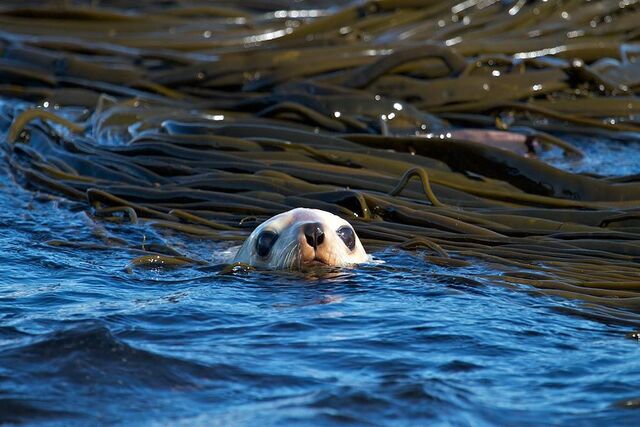fur seal
IUCN
ENBasic Information
Scientific classification
- name:fur seal
- Scientific Name:Arctocephalinae
- Outline:Carnivora
- Family:Carnivora Otariidae Callorhinus
Vital signs
- length:150-210 cm
- Weight:45-270 kg
- lifetime:20 year
Feature
It gets its name from its appearance which resembles a cute puppy, and is given the title of "fur sea lion" because of its dense and smooth fur.
Distribution and Habitat
Fur seals are found all over the world. In addition to the northern fur seals that live in the Bering Sea, there are also fur seals in the waters of Australia, New Zealand, Tasmania, South Africa and Antarctica.
Appearance
The fur seal has a spindle-shaped body, a round head, large eyes, but small ears, and a long beard on its mouth. It is covered with fine short hair, and its back skin is brown-gray or dark brown, while its belly skin is lighter in color, grayish white. It has five toes on its forelimbs, with webbed toes between them, and its hind limbs are wide and fan-shaped, which is convenient for paddling.
Details
The fur seal is a mammal of the carnivorous order Sea Lion, subfamily Sealidae, and is about the same size as a seal, with a length of nearly 2 meters. However, its weight is much smaller, weighing only more than 20 kilograms, and its limbs have also degenerated into flippers. , so moving on land is slow. Fur seals are carnivores and eat not only cod and frog fish, but also sea crabs, shellfish, etc. They live in groups and like to bask in the sun. During the day, they often gather in large groups on rocks, ice and snow to sunbathe, or hunt in offshore areas, and at night they come ashore to rest. Breeding occurs in late spring and early summer. At this time, large groups of male fur seals are the first to return to their birthplace, occupying territory and waiting for female fur seals to flock to the shore, mate with them, and produce offspring. Every year, about half of the fur seal pups die shortly after birth. Some were trampled to death by other fur seals in the colony, and others died from hookworm disease or other infections.

The ability of fur seals to move forward on land and swim is innate. They are very good swimmers. Soon after birth, they can swim at a speed of 15 miles per hour for 5 minutes and dive to 240 feet underwater. Fur seals are clumsy on land, but not as clumsy as real seals. The reason is that the former has larger flippers, allowing it to reach speeds of up to 5 miles per hour.

Predators swim offshore during the day to hunt, and come ashore to rest at night. Sensitive hearing and smell. Except for the breeding season, it has no fixed habitat and needs to travel 1,000 kilometers to hunt once. They generally hunt in the evening, which allows them to avoid their natural predators (sharks, whales, polar bears, etc.) to a certain extent. The latter rarely appear during this time period; and the light is dim at this time, making fur seals difficult to spot.

What is particularly interesting is that stones are often found in the stomachs of fur seals, weighing up to 200-400 grams. It is difficult to determine the biological significance of these stones. Some people believe that they swallow stones to adjust their body balance, and that the stones can reduce the buoyancy of their fat. However, many biologists believe that these stones are used to grind food and help digestion, just like the sand in the Bird's Nest is used to grind grains. Others believe that stones are used to knock out parasites in the stomach. When the parasites are crushed to death, they will be thrown up by the stomach. However, a considerable number of stones have also been found in the stomachs of young fur seals that still feed on breast milk, which makes the above theory difficult to justify. So far, people have not found a convincing answer.

In China's traditional Chinese medicine classics, fur seals are also called fur seals because the testicles and penis of male fur seals, commonly known as fur seal kidneys or fur seal navel, can be mixed with other drugs to formulate traditional Chinese medicine. A research team composed of researchers from the Natural Environment Research Council in the United Kingdom and the University of Bielefeld in Germany found that climate change has actually affected the survival of Antarctic fur seals. The consequences include a decrease in the overall number of fur seals, a decrease in the weight of newborn fur seals, and fertility. Period delay or even genetic changes.

Fur seals are considered endangered by the World Wildlife Conservation Society. Listed in the 2012 Red List of Endangered Species ver 3.1 of the International Union for Conservation of Nature (IUCN)









